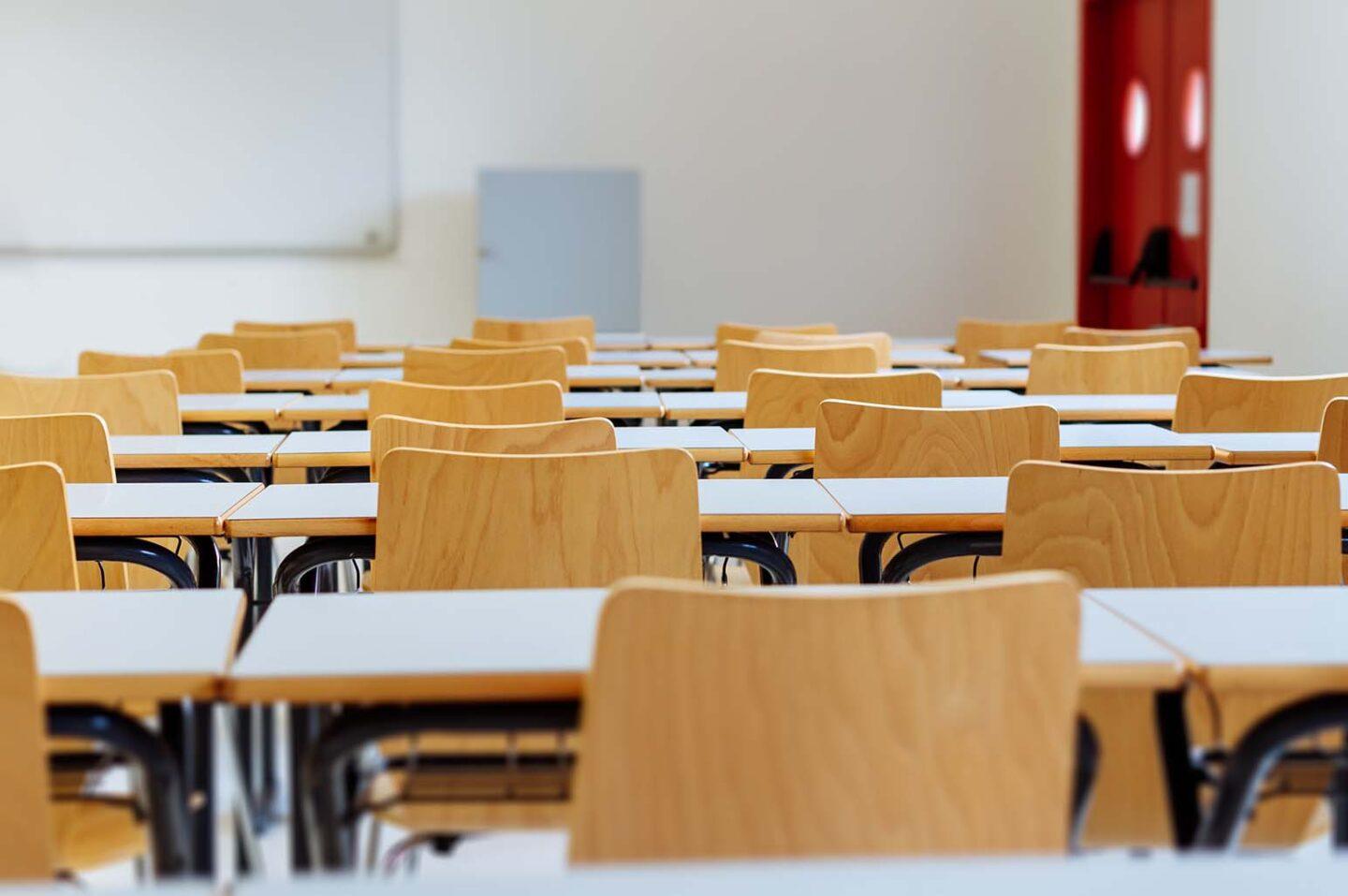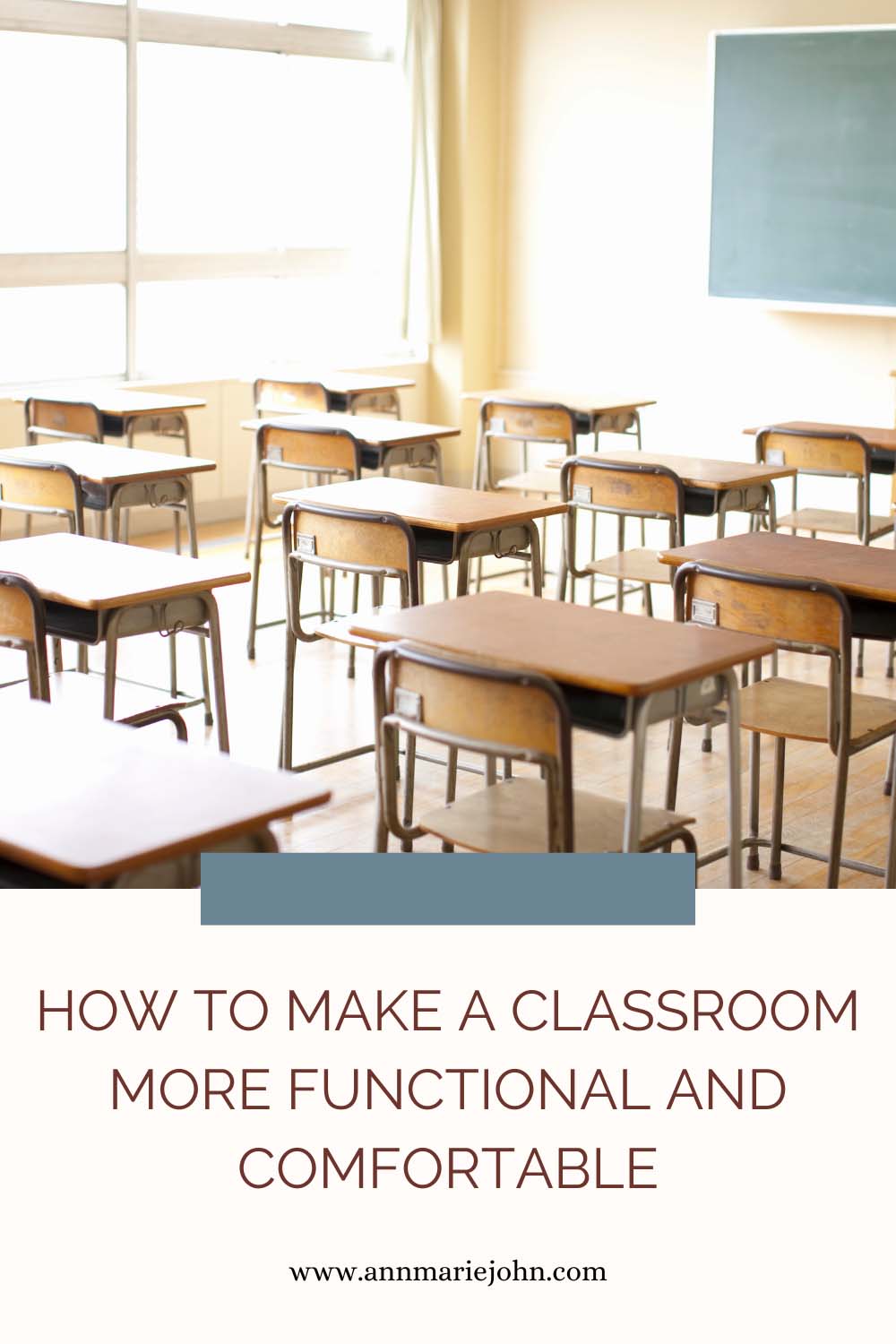Get tips and suggestions to create an effective learning environment in your classroom. Learn ways to make the best use of space, optimize lighting, ensure comfort for students, and more!

All teachers strive to create a classroom environment that is both functional and comfortable for our students. But with so many different factors to consider, it can be challenging to know where to start. From furniture arrangement to lighting and decor, there are countless ways you can transform your space into a more welcoming and productive learning environment. In this post, we’ll share some top tips for making your classroom more functional and comfortable – helping you create an atmosphere that fosters creativity, engagement, and success among your students!

Desk and Chair Arrangements
The desk and chair arrangement in a classroom can have a big impact on the overall functionality and comfort of the space. Here are a few tips to keep in mind when arranging desks and chairs:
- Make sure there is enough space between desks and chairs so that students can move around freely.
- Arrange desks and chairs in groups so that students can easily collaborate.
- Make sure all desks and chairs are facing the front of the room so that everyone can see the teacher.
- Use different colors or patterns for different groups of desks to help students identify where they should be sitting.
- Keep in mind the needs of individual students when arranging furniture, and make accommodations as necessary.
Technology Integration
Technology has become an increasingly important part of education in recent years. Many schools now have laptops or computers in every classroom, and some have even replaced traditional textbooks with digital versions. While this shift can provide many benefits, it can also be challenging to integrate technology into the classroom in a way that is both effective and comfortable for students.
There are a few key things to keep in mind when integrating technology into the classroom:
- Make sure there is a balance between tech-based and non-tech-based activities. Too much screen time can be detrimental to student learning, so it’s important to mix things up.
- Be aware of different learning styles and needs. Some students may benefit from using tech tools such as text-to-speech or video content, while others may prefer more traditional methods.
- Use technology to supplement rather than replace face-to-face interaction. Although online communication can be helpful, it’s still important for students to interact with each other and their teachers in person.
- Keep security and privacy concerns in mind. When using tech tools, be sure to set appropriate privacy settings and only share information that is appropriate for the class.
By following these guidelines, you can make sure that technology is used effectively in your classroom without sacrificing comfort or privacy.
Organization and Storage Solutions
One of the most important things to consider when setting up a classroom is how you will organize and store materials. There are many classroom storage solutions, so it is important to find what works best for you and your students. One way to organize materials is by using bins or baskets. This can be helpful if you have a lot of small items that need to be stored. You can label the bins or baskets so that students know where everything is.
Another way to organize materials is by using shelves. This is a good option if you have larger items that need to be stored. You can also use both bins and shelves to create an organized space. Another thing to consider when organizing your classroom is how you will store student materials. It is important to have a place for students to put their backpacks, coats, and other belongings. One way to do this is by using hooks or cubbies. This allows each student to have their own space and keeps the classroom organized. Another option is to use storage containers, such as plastic tubs or bins. This can be helpful if you do not have enough space for individual cubbies or hooks.
Lighting Options
In any room, lighting is key to creating the perfect ambiance. In a classroom, you want to make sure that the lighting is bright enough to help students stay focused but not so harsh that it becomes a distraction. Here are a few different lighting options to consider:
1. Fluorescent Lighting: This is the most common type of lighting found in classrooms. It is bright and efficient, but can sometimes be too harsh for some students.
2. LED Lighting: LED lights are becoming more popular in classrooms because they are very energy-efficient and produce little heat. They also come in a variety of colors, so you can create different lighting effects depending on the mood you want to set in the classroom.
3. Natural Lighting: If your classroom has windows, take advantage of natural light whenever possible. Not only will it save you money on your electric bill, but it can also help students feel more alert and focused.
Color Schemes
There are a few key factors to consider when choosing a color scheme for your classroom. The first is the purpose of the room. If you will be using the space for teaching, then you will want to choose colors that are known to promote concentration and focus. Blue and green are often used for this purpose. Yellow can also be a good choice, as it is known to promote creativity.
If you want to create a more relaxed atmosphere in your classroom, then you may want to consider using warmer colors like red or orange. These colors can help create a cozier feeling in the room.
Once you have considered the purpose of the room, you can then start to think about what colors will work well together. You may want to choose two or three main colors and then use accents of other colors throughout the space. For example, if you choose blue as one of your main colors, you could use yellow as an accent color.
Natural Elements in the Classroom
There are a few things that you can do to make your classroom more comfortable and functional for everyone. One way is to bring in natural elements. This can be anything from plants to stones or even shells. Having these things in the room will help to create a more calming and relaxing environment. You can also use them as part of your decor or as part of a lesson. For example, you could use stones in a math lesson on measurement.
We hope this article has given you a few ideas on how to make your classroom more functional and comfortable. From making sure the furniture is arranged properly for easy access to adding some plants to help boost morale, there are plenty of ways that you can make your classroom an inviting place for everyone. Remember that these tips aren’t only applicable in classrooms; they can also be used wherever learning takes place! With a few thoughtful touches here and there, your students will have an environment where their minds can flourish.
